
Startups discovering specialized support.
A centralized hub for MaRS services—fostering stronger community engagement among founders, investors, partners, and community organizations.

A centralized hub for MaRS services—fostering stronger community engagement among founders, investors, partners, and community organizations.


Albert Tai is the founder and CEO of Hypercare


Matt Parson is the founder of Benji
This makes it challenging for founders to access essential information and resources efficiently. There is a clear need for a centralized hub for MaRS services. This will foster stronger community engagement among founders, investors, partners, and community organizations that are focused on niche impact areas — climate, health sciences, and applied AI.
I conducted a competitive analysis and heuristic evaluations to inform my designs for each feature. Several tools were used. Mobbin was referenced to identify heuristic patterns on real products. Nielson Norman was used to gather best-in-class practices.
I also referenced flows from competitors such as OnDeck, YCombinator, and Reforge to test their usability and identify areas for improvement that could be applied to our own platform.
.jpg)
Inspiration gathered for directory search experience.
As a team, we decided that the best approach to building 0-1 is leveraging design & development frameworks. Flowbite is built on Tailwind’s frontend development framework and has a corresponding Figma design library. This saved us time from unnecessarily building things from scratch. However, in many areas we had to expand on the library with custom designs to suit our needs.
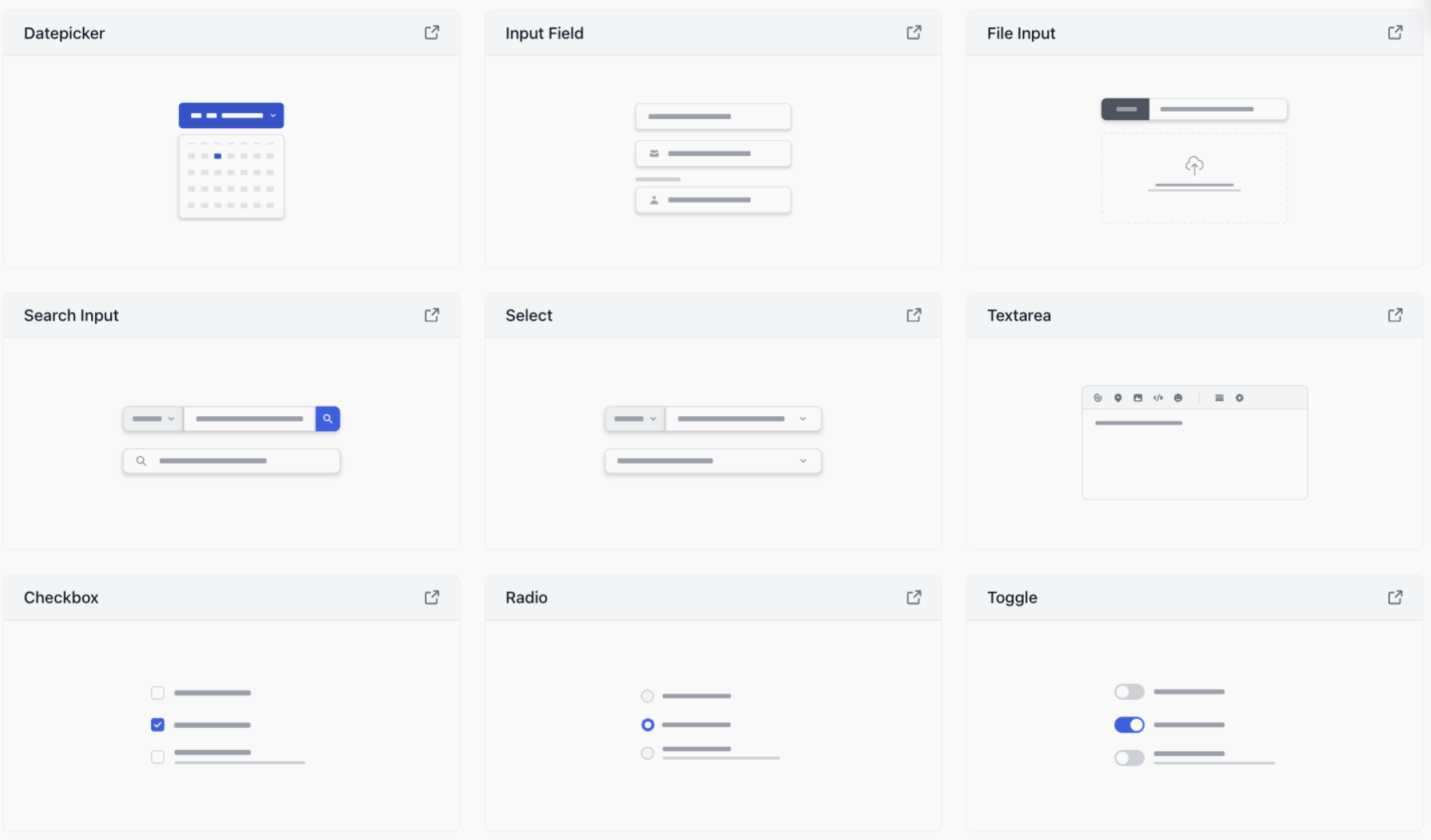
The beginning sets the tone for the whole experience. We had to find a balance between a light onboarding experience with many optional fields while still encouraging a complete profile. Documentation is important to our internal operations as an not-for-profit.
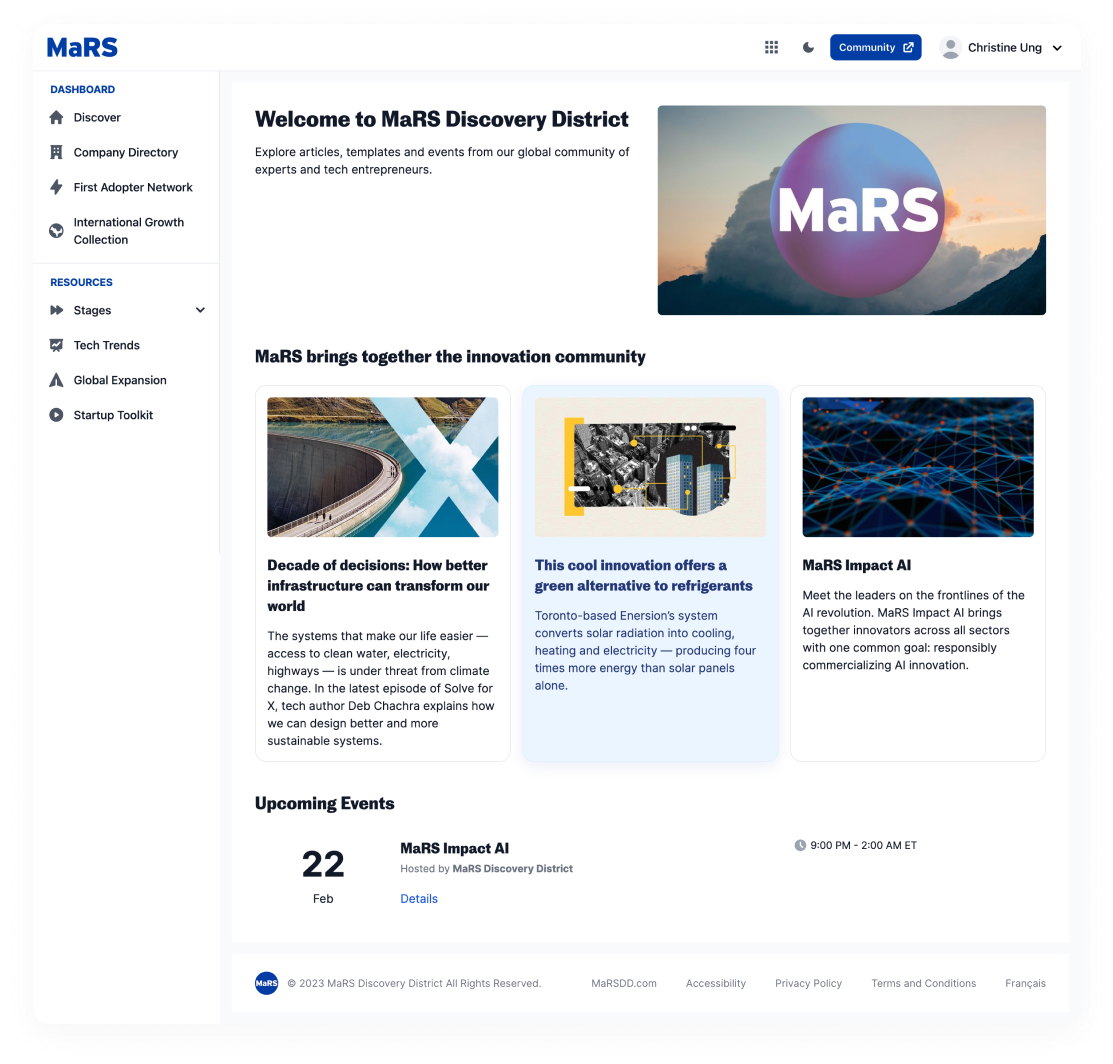
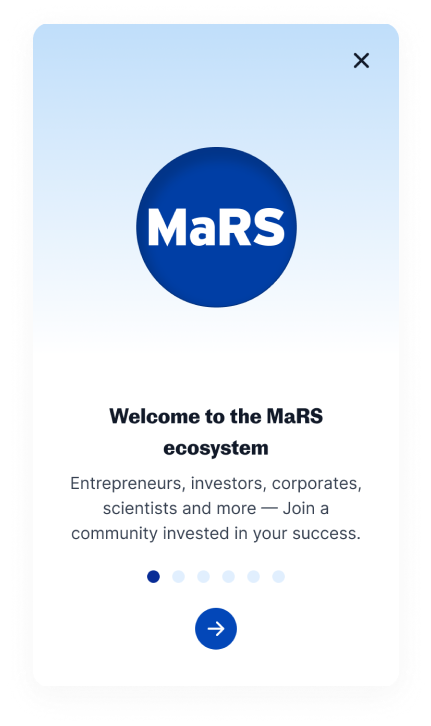
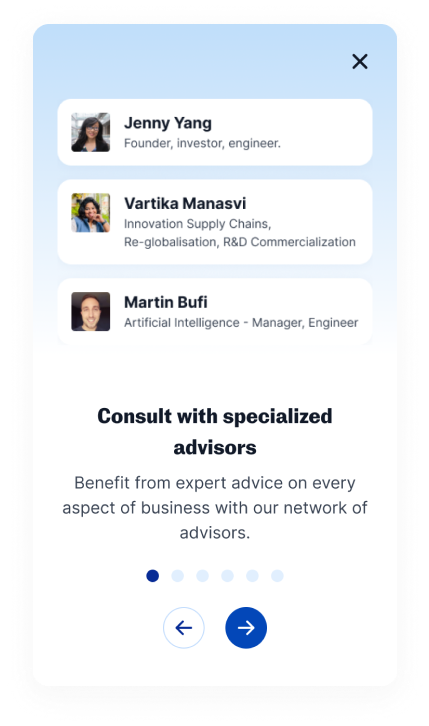
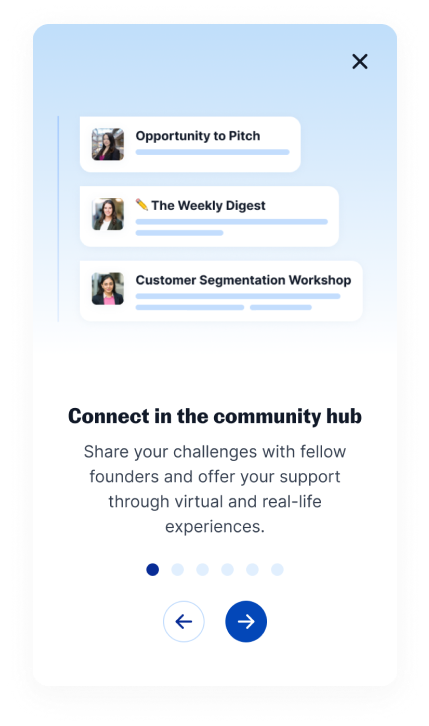
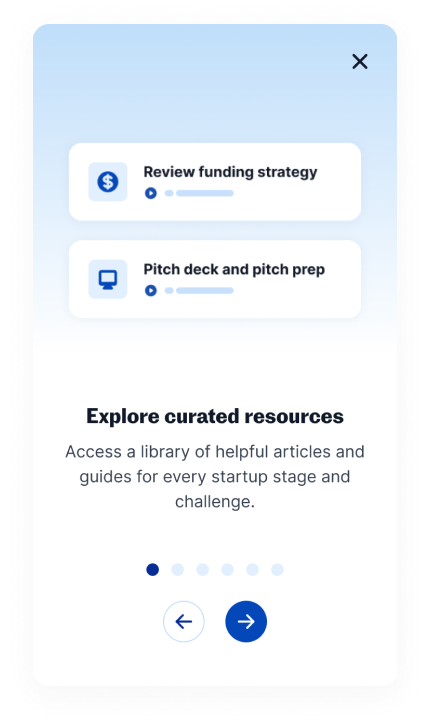
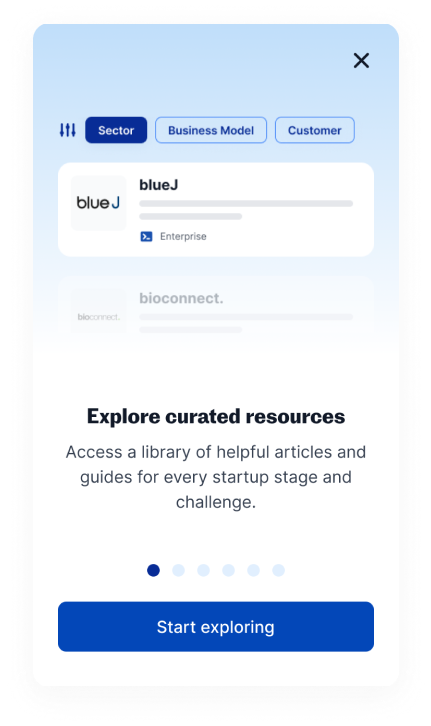
Members land on their discover page — complete with content and community events before exploring into the rest of the experience. In phase 2, we will work towards personalizing this experience.

20% of MaRS members are part of a specialized cohort. On their program channel, they can access services, frameworks, and community.
This access is critical. With only tens of startups working on i.e. quantum solutions in North America — having access to collaborators, partners, and advisors in this field enables the exponential growth of their companies.
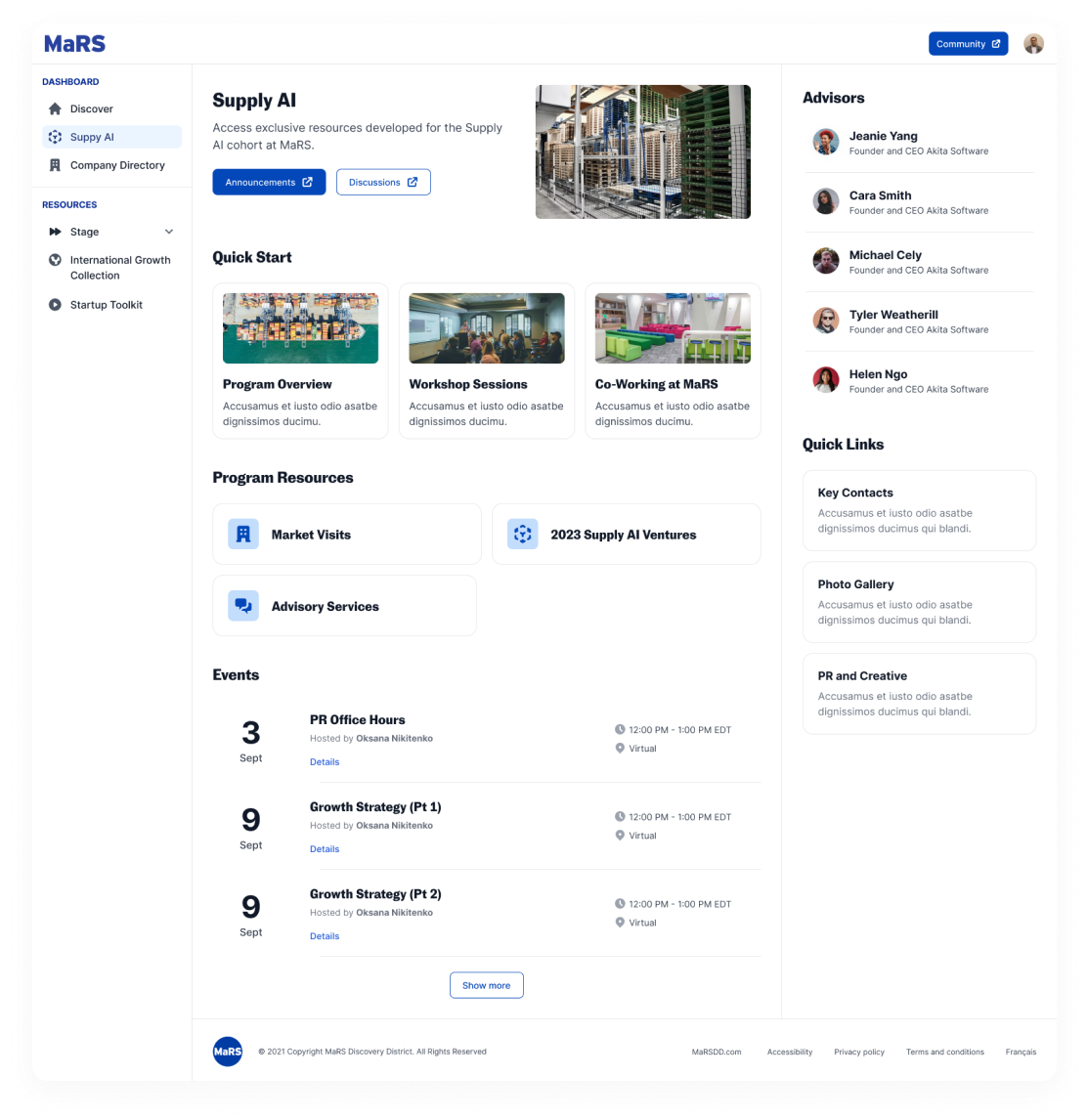
MaRS has heavily invested in creating a large library of resources. In the past this has been very fragmented, making it difficult for members to find them. This feature helps members explore solutions to the common challenges they may face — based on the stage of their startup.
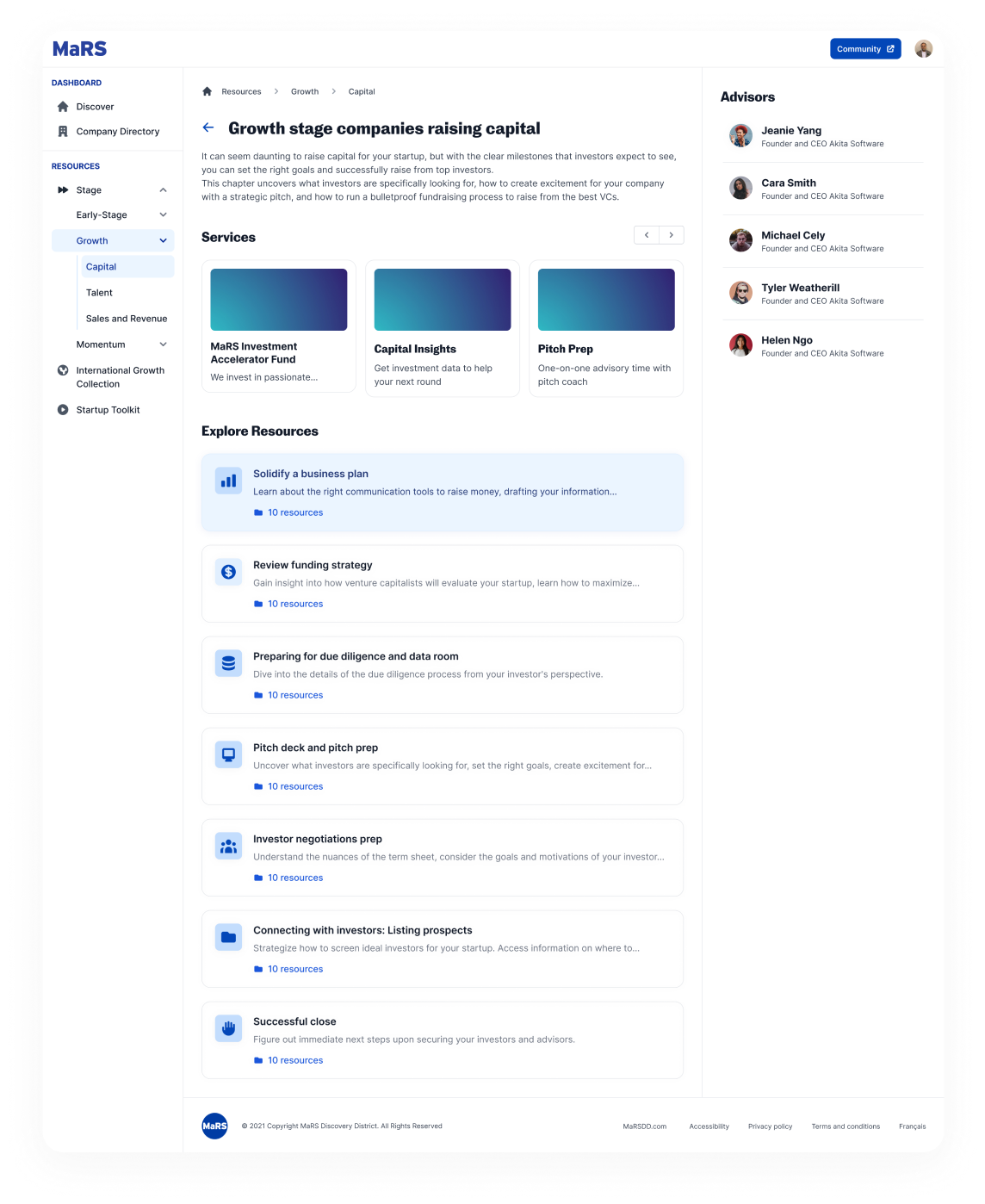
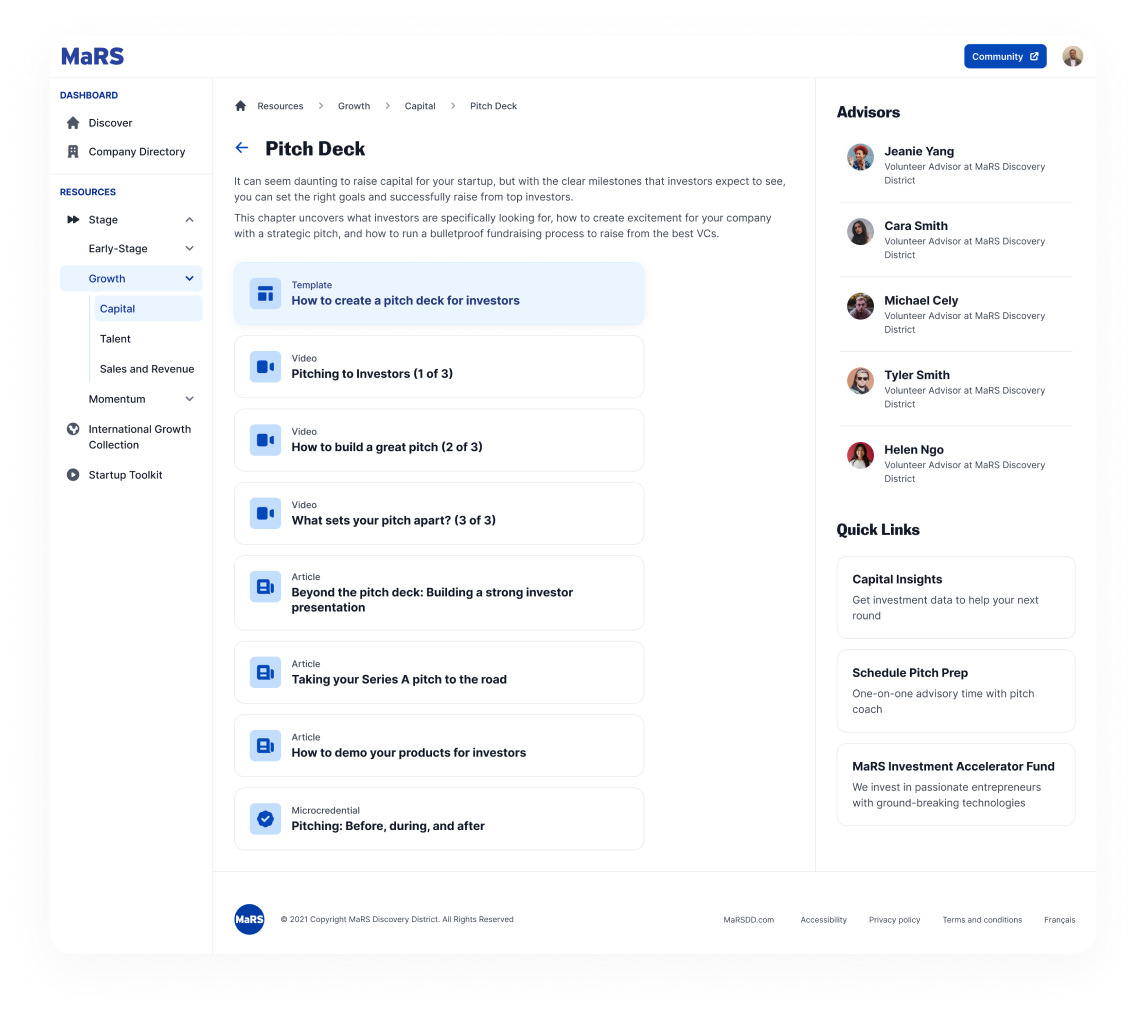
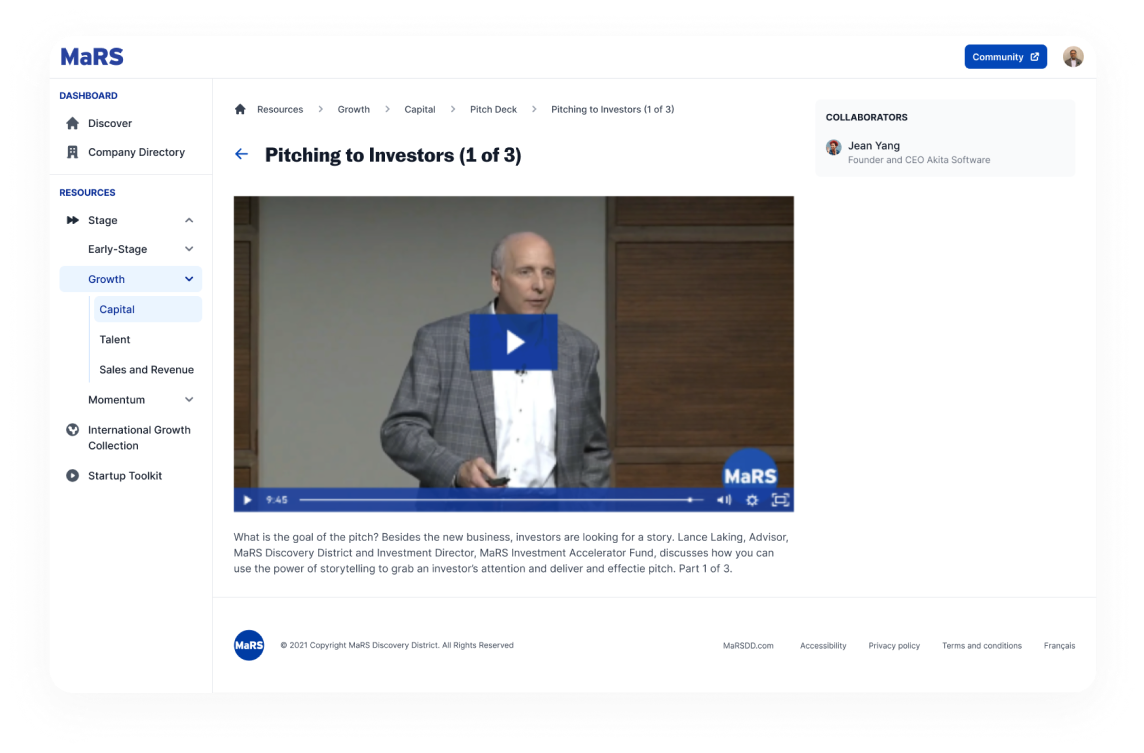
The network effects this platform enables is powerful. We enable members to find collaborators in the industry. In the future, we plan on inviting investors to discover companies working on focused impact areas in climate, health sciences, and applied AI. This feature includes advanced filters and search based on the information provided in the onboarding process.
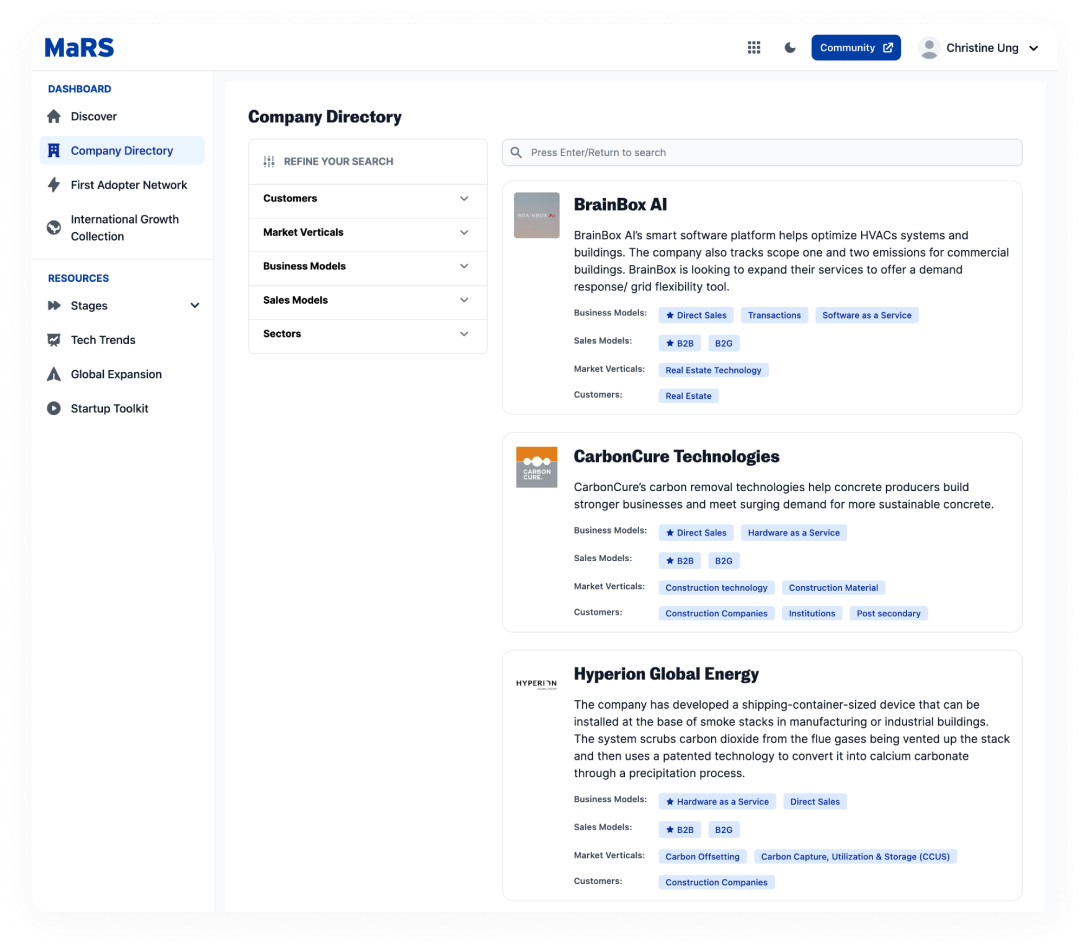
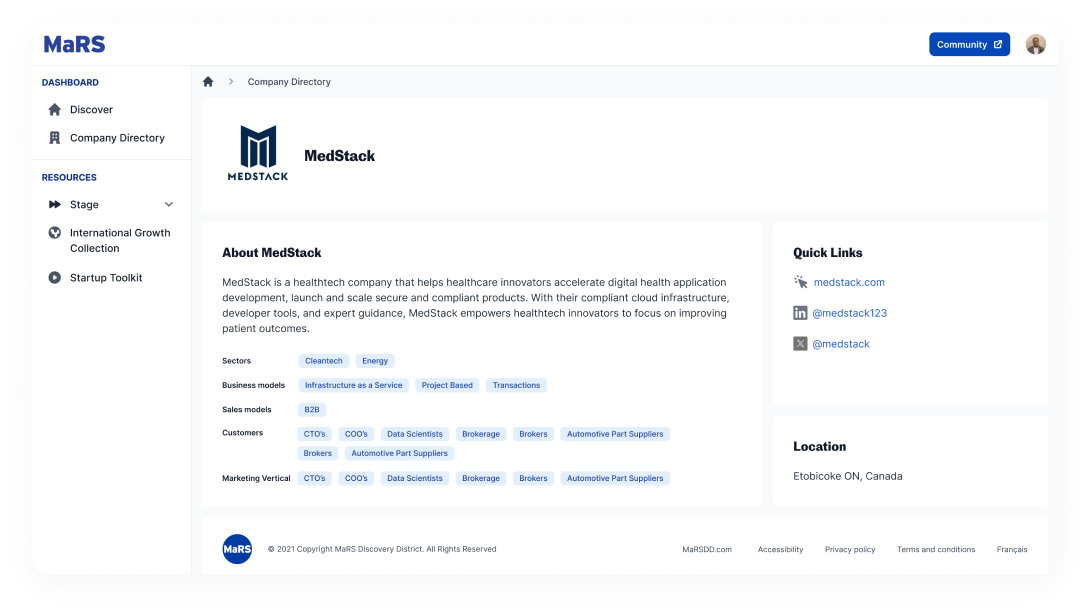
The network effect extends to our volunteer advisor network. Members can browse and schedule time on Calendly with expert advisors on topics from pitch practice to process automation.
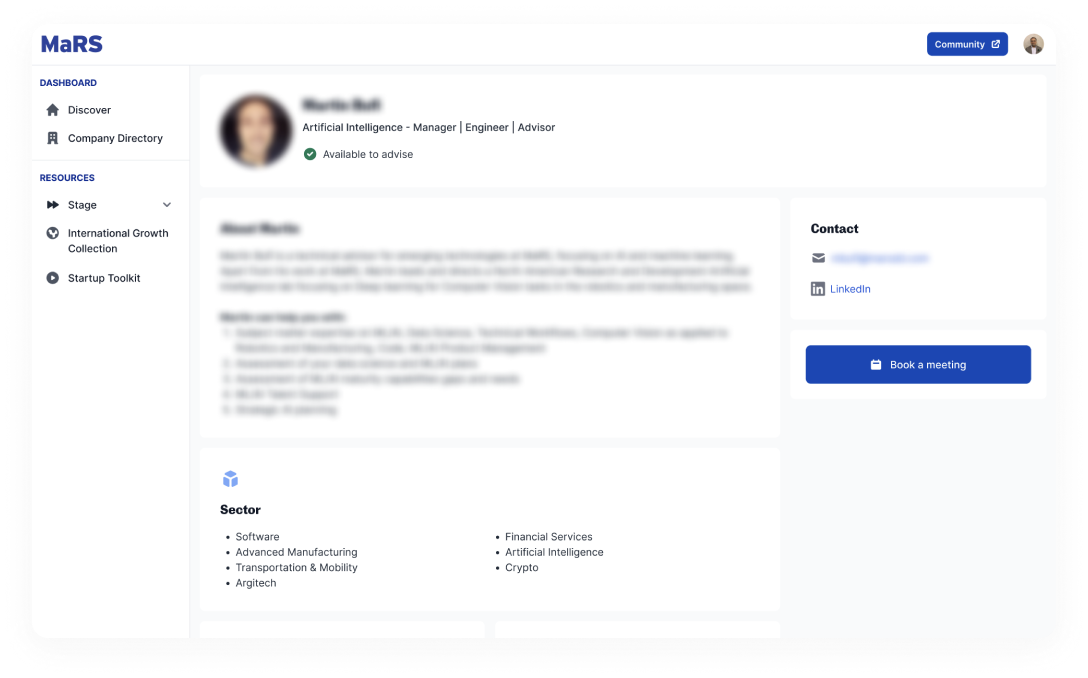
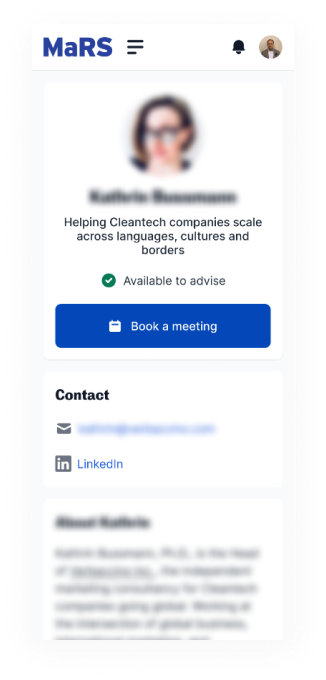
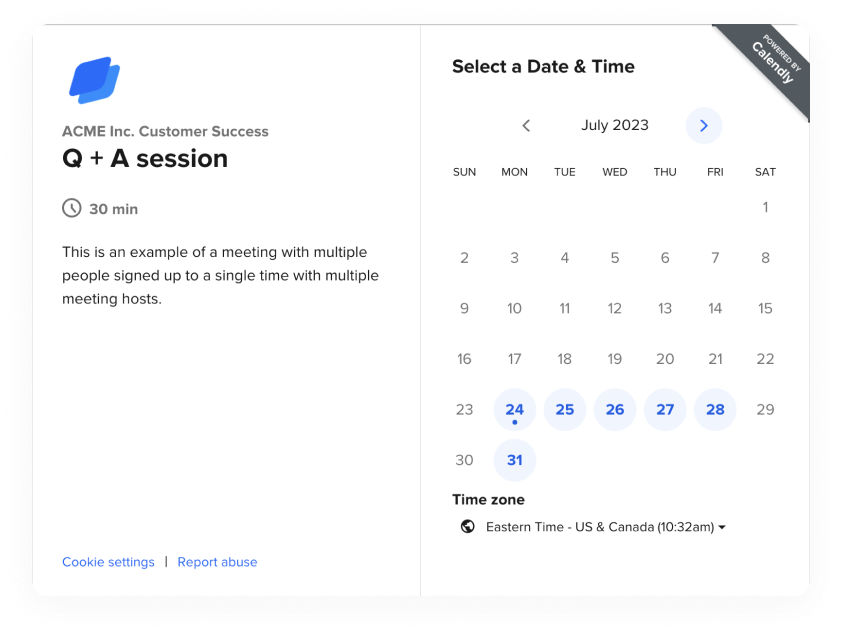
Our program team develops our community through development workshops, demo days, networking events, and more. Marketing MaRS events is an internal challenge we face.
A centralized calendar to highlight community-wide events will drive attendees to take advantage of these opportunities to learn and connect.
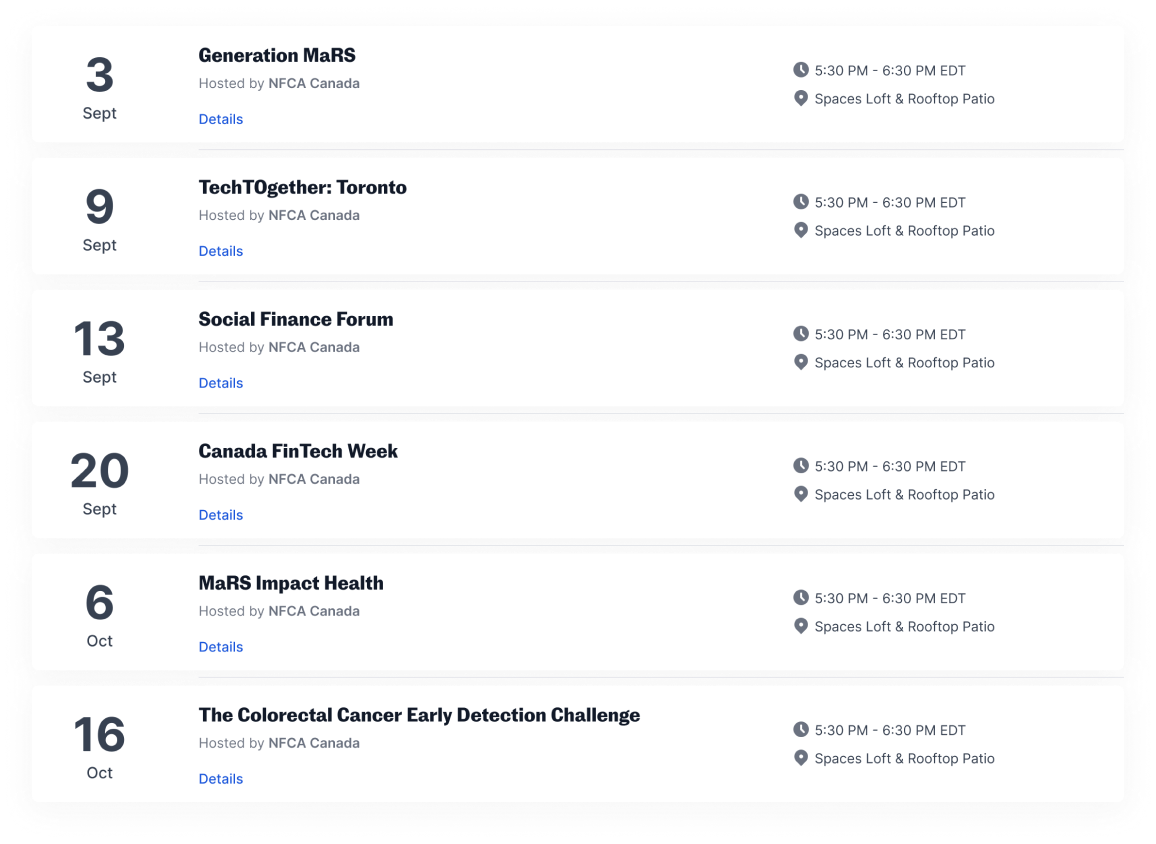
We wanted to bring in feedback loops to measure the success of our solution. We introduced surveys to evaluate if this new platform made it easier for members to find solutions to the challenges they were faced with. To make the feedback more accessible, the engineers worked to funnel submissions into a Slack channel.
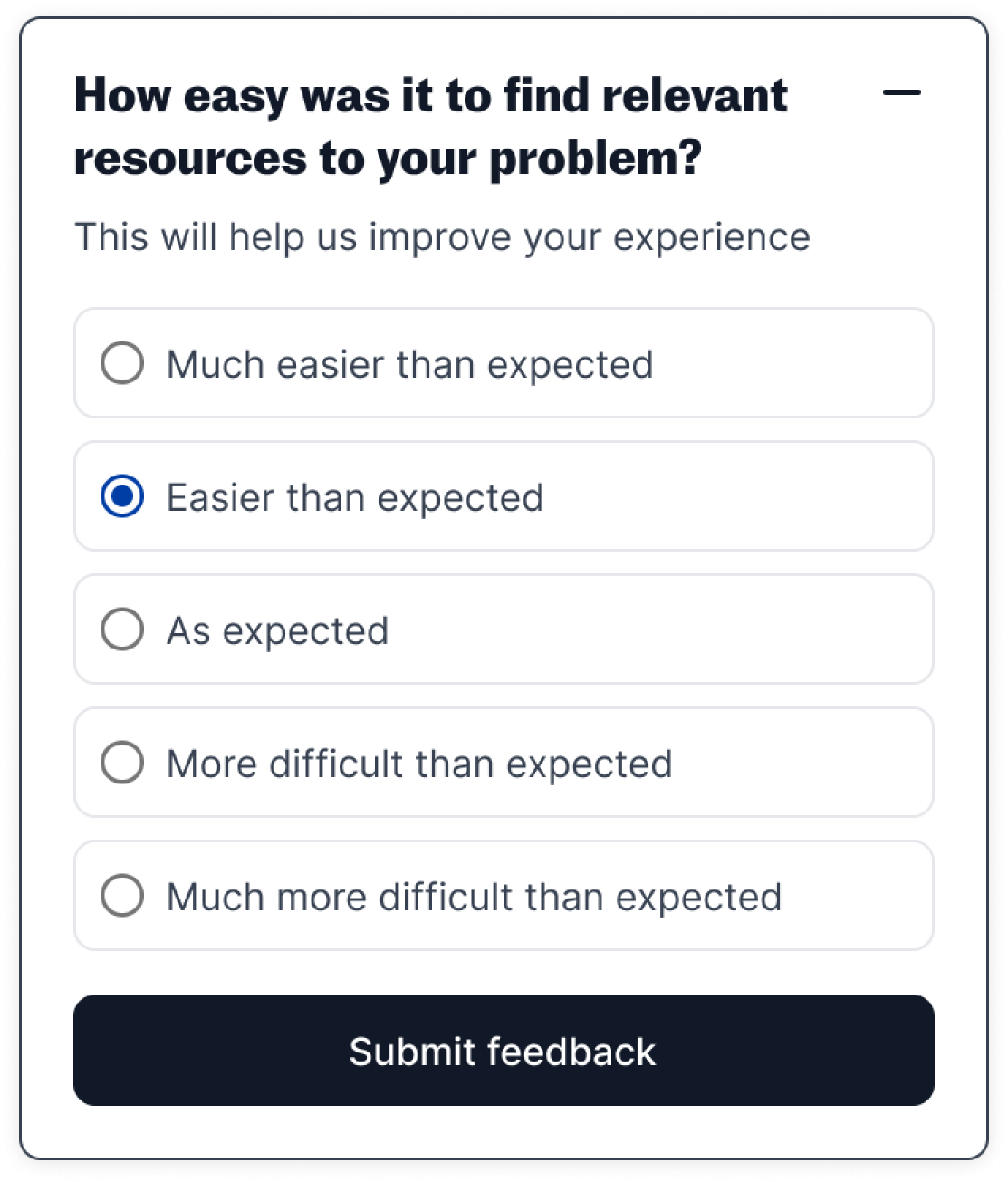
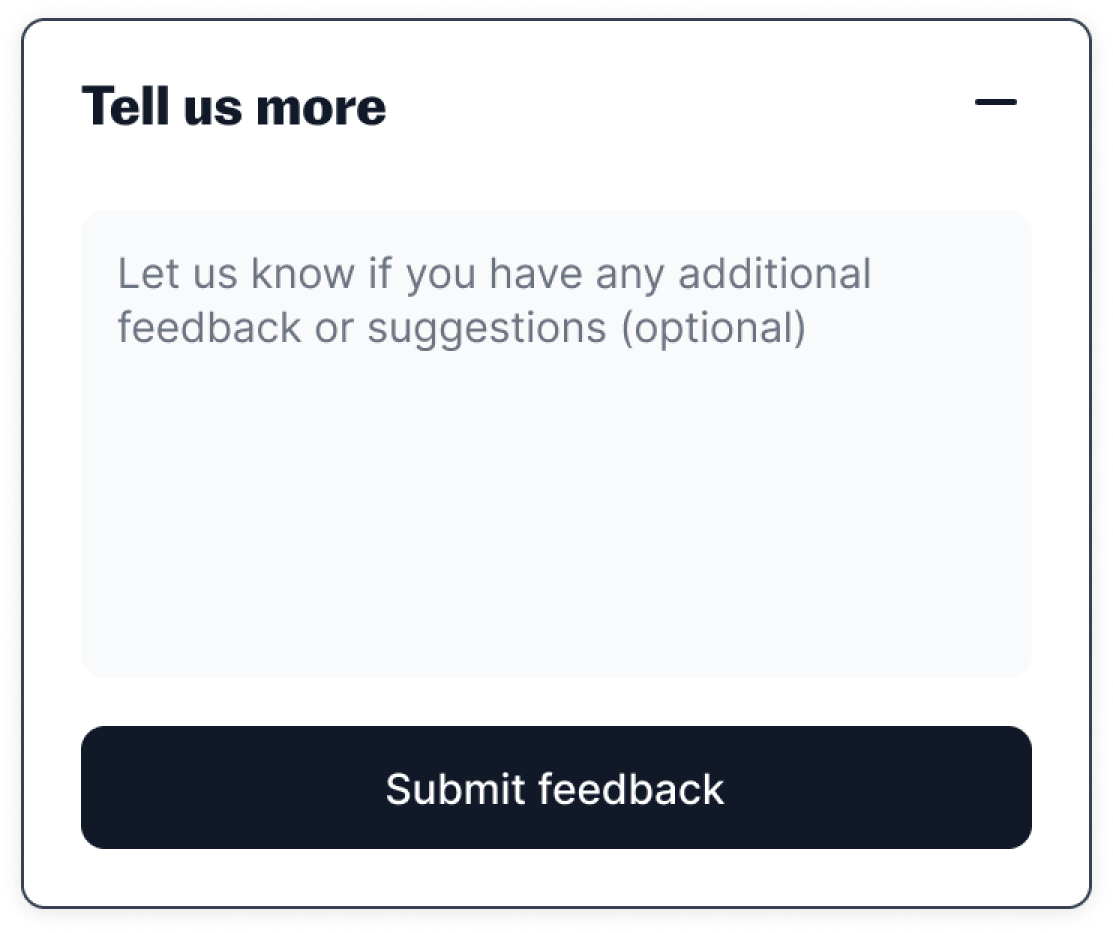

I hand-off my designs to our front-end developers, writing development and QA tickets on Linear. With foundational knowledge of CSS and HTML, I help to ensure we launch quality and polished designs.
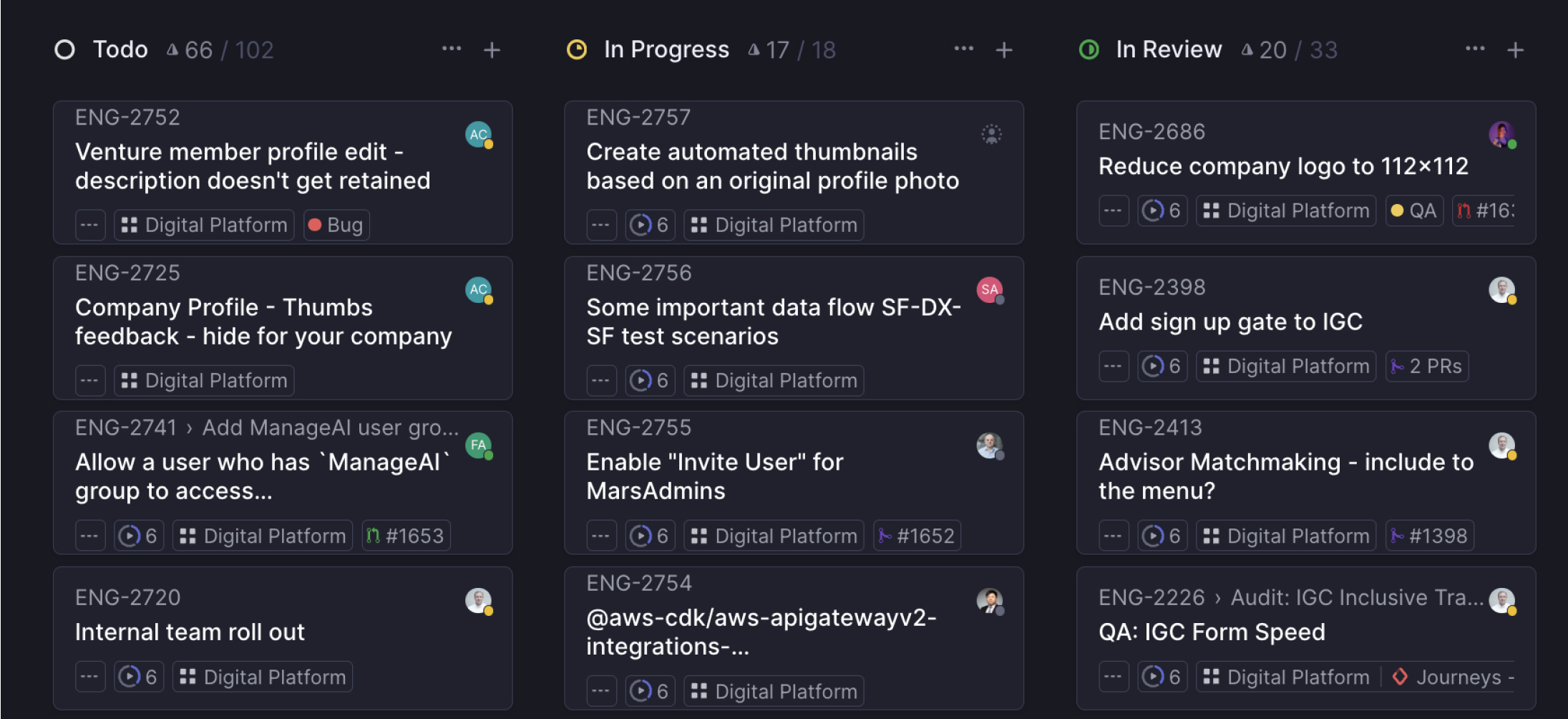
We are taking a stage-based approach to onboard members. This allows us to gather feedback and make improvements on an iterative basis.
01. Internal MaRS employees
02. Beta group with select cohorts
03. All members

Better data
Interface to speed up data sharing and help MaRS pull more signals on companies.

More community
Access point to our community platform and private forum spaces.

New connections
Find great advisors, new advocates and champions for companies.

Better control
Self serve portal for founders to access crucial services and timely advice.

More knowledge
Open our vault of advice. The more we help founders, the more we become a magnet for other great founders.

Program channel
Access programming, curriculum, frameworks. Connect to people from the field.
With working on a project of this scale I learned a lot that will change the way I work in the future.

Collaboration is Core to 0-1 Building
A sense of ownership is required from design and development in 0-1 building. As we build systems, design must work with development to ensure our systems are aligned.
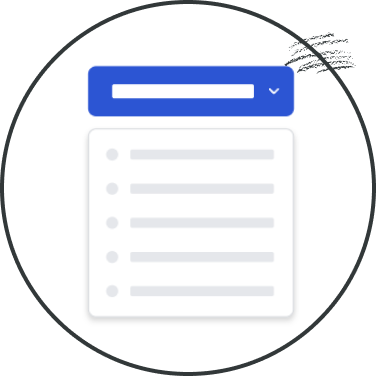
Designing for Speed
As a single design team, I had to leverage toolkits and avoid designing things from scratch in favour of speed. This also helps our front-end team in the same way.